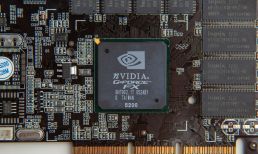When it comes to contemporary business operations, complexity is nearly unavoidable. The bigger a business gets, the more borders it crosses and peers it acquires, the taller the task becomes of integrating its disparate operations and financials — much less surfacing insights and acting in real-time on data-driven decisions.
And with the news that the European Securities and Markets Authority is aiming for either the fourth quarter of 2027, the first quarter of 2028 or the fourth quarter of 2028 for moving its financial markets to be more in line with the U.S., where T+1 settlement for capital markets went live this past May, forward-thinking multinationals are already weighing the impact this accelerated settlement will have on their corporate treasury operations.
After all, in today’s fast-paced global economy, the ability to respond swiftly to financial changes can be the difference between success and failure. For multinational corporations, where financial operations span multiple jurisdictions, currencies and regulatory environments, the need for real-time treasury management has never been more pressing.
Global businesses need instant insight into their finances. Traditional treasury operations, which often rely on end-of-day processes and batch data, are ill-suited to meet the demands of a T+1 world – making the adoption of real-time treasury solutions crucial for compliance with future T+1 realities.
Read more: Unlocking the Critical Role of Treasurers in Corporate Decision-Making
The Imperative of Real-Time Treasury Management
Cash forecasting is the cornerstone of treasury operations, enabling companies to predict their future cash needs and plan accordingly. However, in a T+1 environment, the margin for error in cash forecasting narrows significantly. Without real-time data, treasurers may find themselves scrambling to cover unexpected shortfalls or, conversely, holding excess cash that could have been invested or used to reduce debt.
Advertisement: Scroll to Continue
The T+1 settlement cycle, where transactions are settled one business day after the trade date, marks a significant acceleration from the traditional T+2 cycle and is meant to reduce counterparty risk, enhance market liquidity, and improve overall market efficiency.
However, this accelerated timeline poses new challenges for corporate treasuries, particularly those of multinational corporations that must navigate complex global financial landscapes — and the elephant in the room is the European Union’s misalignment with the market realities in the U.S.
“Complexity can arise from many different sources, whether it’s the holding structure or the nature of the business,” Noam Mills, CEO at Panax, told PYMNTS.
Mills noted that pain points can span from the realities of businesses working across multiple geographies and dealing with different currencies; to others whose pain stems from a multitude of accounts, even in one geography, that can make managing working capital a challenge. Operational and treasury-centric complexities frequently also arise from the usage of credit lines on one hand or interest-bearing account on the other hand.
Real-time treasury solutions allow for dynamic cash forecasting, where predictions are continuously updated based on the latest transaction data, market conditions, and other relevant factors. This level of precision is critical in a T+1 world, where the ability to anticipate and react to changes in cash flow can directly impact a company’s financial stability.
PYMNTS Intelligence data on corporate treasury challenges and opportunities found that corporate workflows can, and should, benefit from everything from automated daily reconciliation across all bank accounts to advanced cash flow forecasting.
See also: Treasury’s Digital Migration Creates Greater Synergies With Finance Function
The Role of AI in Transforming Cash Management
To successfully transition to real-time treasury management, companies will need to invest in advanced treasury management systems (TMS) that can integrate seamlessly with their existing financial infrastructure.
These systems must be capable of handling large volumes of data, providing real-time analytics and supporting automated processes. Additionally, companies will need to ensure that their TMS can interface with external systems, such as banking platforms and payment networks, to facilitate real-time transactions and reporting. And modern treasury operations are increasingly being given a shot in the arm from other advanced technologies like artificial intelligence (AI) and machine learning (ML).
“AI and ML are transforming everything treasury,” Jarrett Bruhn, managing director and head of data and AI in global transaction services at Bank of America, told PYMNTS last year. “It’s the equivalent of the Industrial Revolution 4.0. When you think of what a treasurer does, trying to find operational and cost efficiencies, these tools and technologies fundamentally change how they can do their daily job.”
And as PYMNTS Intelligence has found, ultimately, treasurers with high levels of influence are far more likely to report that their companies have predictable cash flows, expect revenue to increase and are agile in responding to shifting marking conditions.




